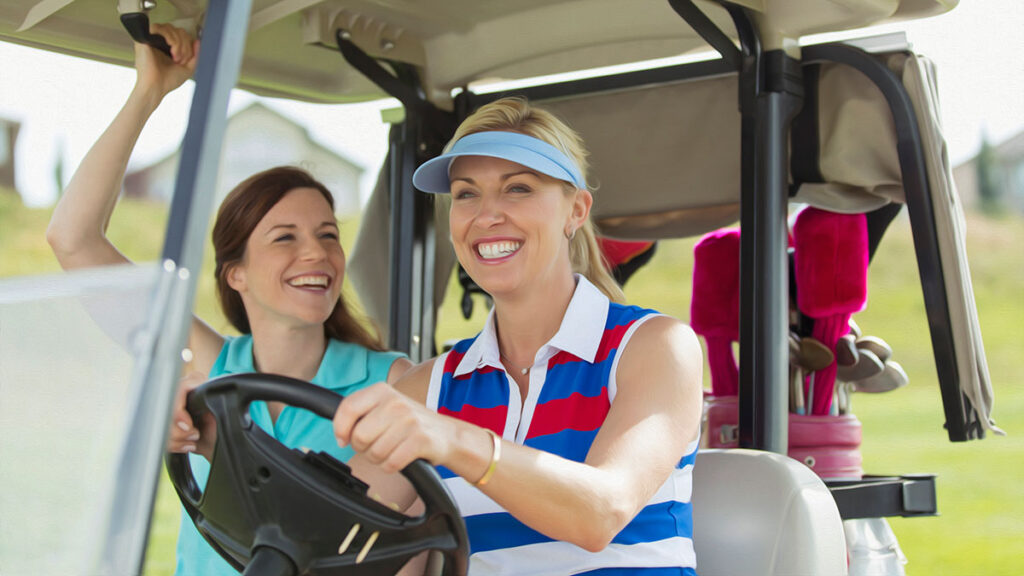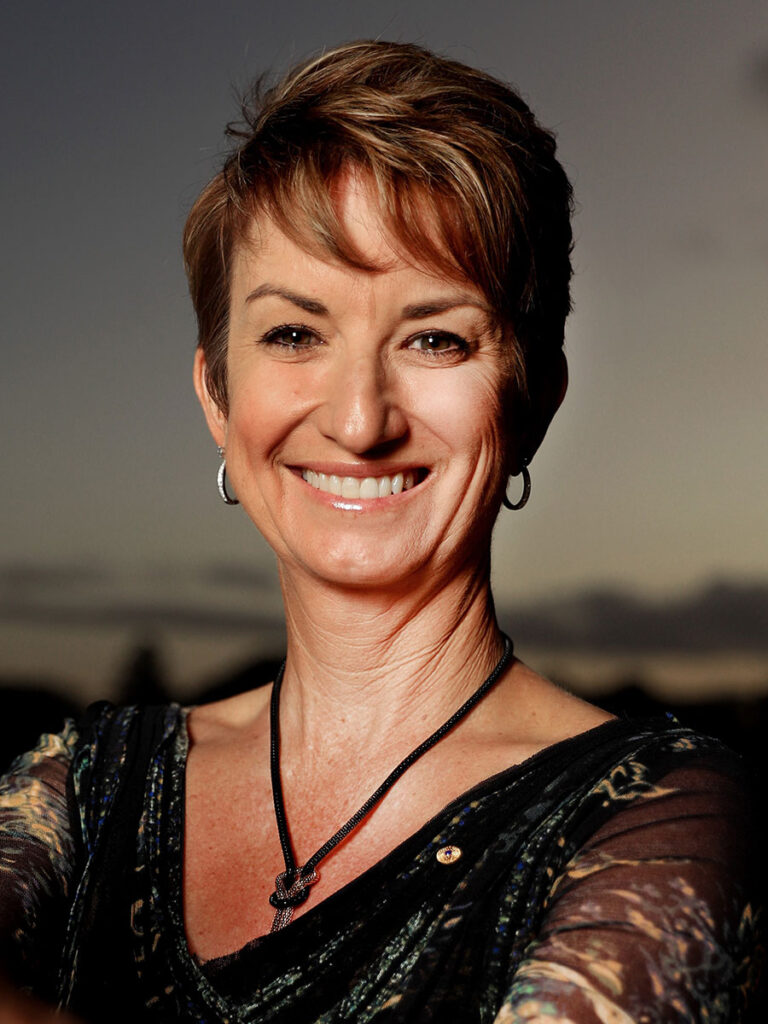Golf clubs have a duty to promote equal opportunity for women and girls while eradicating all forms of discrimination. We reflect upon the historical treatment of women and initiatives now being offered to help golf clubs change for the better.
How it was: When division ruled
For those old enough to remember, Saturdays at metropolitan golf clubs across Australia could be described as patriarchal. Men had all the morning tee-times while women could tee off in the afternoon after the last men’s group if they so desired.
Even boys were allowed to play in Saturday morning competitions, although they were often required to play with adults to observe etiquette and rules of the game. Several semi-private clubs would offer batches of tee-times just after sunrise to male social groups. And it wasn’t unusual for a barmaid to be the only woman in the clubhouse on a Saturday morning.
The pantomime would continue on Sundays when male members had the prime early morning tee-times. In a concession of generosity, women could play in the Sunday mixed competition about midday. More often than not they played with their spouse.
Lady members were allocated their own competition day in the middle of the week, often Tuesdays, in which they could mix with other women. It was not ideal for working women who held a 9-to-5 job midweek. Perhaps as to counter the perceived bias against women, club membership dues for ‘Associates’ were significantly less – sometimes half – that of the annual subscription fee for men.
This was the 1980s when Greg Norman ruled the roost in world golf. The sport was fashionable and even second-tier metropolitan clubs had waiting lists to join. The game’s popularity was such that acquiring a preferred weekend tee-time usually meant queueing at the club on the Friday evening a week or a fortnight prior.
That was golf. That’s how it was. And if you didn’t like it, tough.

How it is: Female club membership on the rise
Changing attitudes in golf has proven to be more difficult than turning around the QEII. It took 275 years for Muirfield Golf Club in Scotland to accept its first female members in 2019. Augusta National Golf Club was more progressive, taking ‘just’ 80 years to welcome female members when it admitted two in 2012.
Club-land has seen strides towards equality in the past two decades. Women playing alongside men has become the norm in weekly competitions while female appointments to club boards and committees have started to occur. A cynic may attribute that to a dramatic fall in membership numbers since the Norman-inspired boom, forcing clubs to more willingly embrace women.
The onset of COVID led to an increase in golf participation across the country as people embraced the outdoors. Club membership has flourished again with total membership growing by 2.7 percent to 426,384 (according to the most recent data in 2021-2022). That followed a 6.4 percent growth in the previous 12 months. Social club membership has increased by 8.9 percent (the second largest increase since records were first kept in 1970).
Female membership (women and girls) rose 4 percent to 79,704, which represents 18.7 percent of the total club membership of 426,384. Golf Australia’s Get Into Golf program for adults has grown by 65 percent while women’s participation has soared by 84 percent. The MyGolf initiative for kids aged 5-12 has grown by 13 percent, of which participation by girls has increased by 25 percent.
Setbacks for female participation
But for every two steps forward, there appears to be at least one step backwards. Golf attracted publicity for all the wrong reasons recently when a competition was cancelled after one club refused to allow the opposing captain to compete because she was a woman. Zoee Dolling – who was appointed as the first female captain of Kooyonga Golf Club this year – asked to play in the annual Cargie inter-club match against Royal Adelaide Golf Club. The event has been a male-only affair since its inception in 2002. Royal Adelaide rejected the request on ‘the conditions of play’ and Kooyonga members subsequently rallied behind their captain such that they couldn’t gather enough numbers to field a team in the 52-a-side competition.
Bullying by older women towards younger females
It’s as obvious as the nose on your face that to have a healthy, robust golf industry, we need more female representation in club membership and club leadership while offering more career opportunities to women.
However, it’s not always been men who’ve made golf clubs an uncomfortable – sometimes hostile – environment. At times it was older ladies enforcing archaic regulations upon their younger counterparts. As recently as the past two decades, the lady captain of a prominent Melbourne club would determine whether a woman’s attire was appropriate. The young member would be required to kneel to have her skirt/shorts measured. Too much visible flesh and she would be asked to remove herself until suitably attired.

Sports journalist/presenter Tiffany Cherry was a victim of Australian golf’s unsociable environment. She had her first swings in regional Victoria about the age of 10 and was put off by the abusive behaviour by an older woman. She was mocked and didn’t come back to golf for almost 20 years. Unfortunately, many women and girls never return to the game.
Today, however, Cherry is in a position to prevent such hostility by helping to make golf clubs a more welcoming environment for newcomers. As Golf Australia’s head of women and girls engagement, Cherry is inspired to make it easier for them to be introduced and stay connected with the game.
“It’s so fundamentally important that first touchpoint for women is welcoming and they feel that they belong,” she says.
While female membership has risen to 18.7 percent, Cherry says it’s still a long way from levels in the 1970s when the ratio of golf club membership between men and women resembled more of a 65:35 split.

Initiatives aimed at growing participation by women and girls
In recent times the promotion of women’s golf has benefitted from a closer working relationship between Golf Australia and the PGA of Australia. Pooling their resources has reduced duplication of programs undertaken by the two national bodies.
A line was drawn in the sand in December 2021 with the launch of the Australian Golf Strategy. The five pillars/enablers of the three-year plan were to: 1) tell golf’s story better; 2) attract new golfers; 3) grow golf’s core membership and workforce 4) increase golf’s fan and revenue base and 5) work together to reduce golf’s fragmentation.
A lens was placed over those five key pillars to build a number of initiatives for women and girls. This year saw the pilot of ‘Women and Girls Month’ held in March to celebrate and champion their participation and contribution to golf. The action-packed month was headlined by The Athena, a televised two-day skills test for Australia’s best young women golfers. Other events included the WPGA tournaments and pro-ams, launch of the Women’s Golf Network, junior and beginner adults clinics, plus the Golf Leaders Network.
The R&A Women In Golf Charter is about walking the talk of gender equity at clubs and facilities. The St Andrews-based governing body for golf issued the charter as a strong statement of intent from the golf industry that it must achieve positive change for women, girls and families. It’s akin to a reconciliation action plan with the catchphrase ‘Golf is open to all’. To date, 70 of 1,603 golf clubs across Australia have become signatories to the charter while more than 250 clubs have submitted an expression of interest.
The Visionary Of The Year awards were created to recognise the work being undertaken by golf clubs across Australia to promote equality. Examples range from implementing gender-neutral membership and club competitions, creating avenues for women in leadership positions and developing golfers rather than just clinic players. Kew Golf Club in Melbourne introduced a multi-day club championship that allows women who work midweek to qualify on weekends.
The Australian Golf Foundation Junior Girls’ Scholarship enables clubs and PGA professionals to apply for funding to run a teaching program. Founded by Bonnie Boezeman, the scholarship has expanded to 117 clubs and 683 girls.
Career opportunities for women
Women have been under-represented in the Australian golf industry. That should come as no surprise given female participation is substantially lower than male playing numbers. To try to remedy the gender imbalance, Golf Australia launched the ‘Women & Girls In Golf Careers Showcase’. These roadshows have been staged across the country to highlight career opportunities that exist for women in golf.
The showcase detailed the vast array of careers available: from teaching professionals to golf club administration; from turf maintenance to sales/marketing roles; hospitality management to event co-ordinators. Attendees heard from ‘trailblazing women within the golf industry’ who shared their experiences and outlined career pathways. A particular focus was high school presentations to impressionable teenagers.
“It was great we were able to extend out to speak directly with teenage girls,” Cherry said. “They are the future of our sport and if we educate them early enough, hopefully many will strive to work in sport in the future.
“Every career stream that is open to men is open to women, but so many of them are so poorly represented… Traditionally, golf has been for men. It’s been a sport that has been for the privileged few and mostly men have been welcomed and supported in those roles. And because they’re in those roles, boys and men see that men are in those roles. So therefore that becomes something they can aspire to. Women don’t see it. Girls don’t see it. So therefore they don’t think it’s open to them.”

How it will be: Achieving positive change
In a perfect world, Cherry envisages a better environment at Australian golf facilities. Tangible signs of improvement would include:
- Achieving a 50:50 ratio between men and women for club membership and employment in the golf industry;
- Diversity of thought, not just more representation from women but giving youth and different communities more of a say in decision-making;
- Attaining social interaction, physical exercise and a competitive fix within 90 minutes of arriving at a golf course;
- Gender-neutral tees where golfers play from tee markers that the handicap system deems appropriate for their ability level;
- Relaxing dress standards – remembering that women played golf in billowing dresses and knee-high boots a century ago.
Thinking outside the traditional restraints of golf, Cherry adds: “I want to see child-care offerings at clubs and facilities that can support it… There’s 13 million women and girls in Australia. So there’s probably 1.5 million women who have children under 5 years of age… Imagine if we offered that opportunity for [those women aged 25-40]. Then we would have their kids being minded at the club, much like gyms did 15-plus years ago. And a gymnasium is no more dangerous than a golf club.”
In a 2023 pilot trial for ‘Women and Girls Month’, the Peter Thomson Room in the Australian Golf Centre at Sandy Golf Links was turned into a child-care facility. It had kids’ toys, nappy-changing tables and playpens, Cherry says.
“Imagine if you put a plastic club in a two-year-old’s hands? And some plastic golf balls? You’re creating the next generation of [golfers].”

“Do you really want to know how women were treated back in the day? Well, I remember being told that my shorts looked too short. I had to get down on my knees, on the floor, and they measured the length for the distance between the floor and my shorts. It was half a centimetre too short – FIVE MILLIMETRES. So, what did they do? They gave me an unpicker and made me unpick the hems of my shorts. Only then was I allowed to play.”
— Editor’s Note



